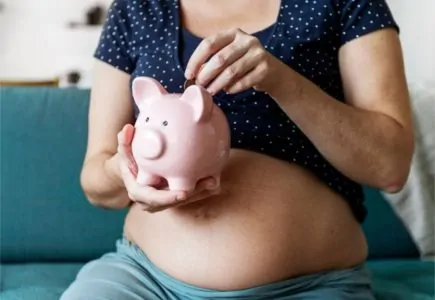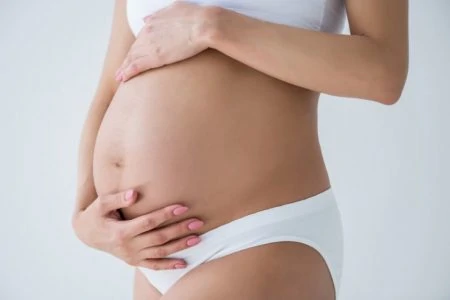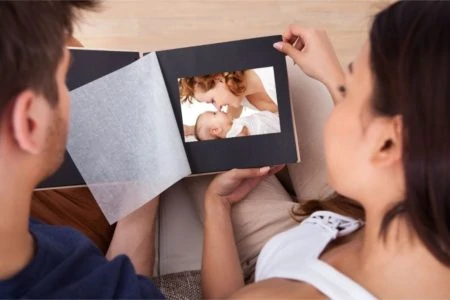While the thought of babies switched at birth often fuels dramatic plots in books and movies, the reality is much less common. That said, baby swapping can be a parent’s worst nightmare, potentially leading to years of separation and the heartbreak of a lost family.
We’ve diligently gathered data, scrutinized lawsuits, and compiled true stories to present you with reliable statistics on babies switched at birth in the United States and around the world.
Discover the actual frequency of such incidents, explore real-life cases, understand the legal implications, and learn about hospital protocols and parental tips to prevent mix-ups.
How Many Babies Are Switched at Birth?
It is tough to put an exact number on it as there isn’t concrete data. In 1998, it was reported that around 28,000 babies were switched at birth in the U.S. (1). While this number is quite shocking, it’s important to note that very few babies end up going home with the wrong family.
However, another report found that only eight babies had been switched by nurses, doctors, and staff ‘in a serious way’ between 1995 and 2008 across the U.S. Overall, it is a very rare occurrence, and with modern technology, it’s even less likely.
30 Statistics About Babies Switched at Birth
Interested in learning more about this rare phenomenon? We’ve put together 30 fascinating facts and true stories about how often this happens, percentages, and consequences.
Prevalence of Baby Swapping
Let’s look at the prevalence of baby swapping at hospitals in the U.S. and other countries.
- It’s rare in the US: While there were 28,000 reported cases in 1998, there were only eight reported findings of a ‘serious’ mix-up between 1995 and 2008.
- Nurse Tiger responsible for baby swapping: In Canada in the 1960s, a nurse — referred to as Nurse Tiger — was responsible for a series of babies being switched at birth (2). After one particular birth, she became annoyed at her aide, who was attaching the baby and the mother’s hospital bands immediately after the birth in the delivery room. After this, the armband protocol was relaxed as Nurse Tiger ordered the bands to be attached later. From then on, the bands were attached after the mother and baby had been separated, leading to a few mix-ups.
- Impossible to determine twin mix-ups: One study found that it’s impossible to determine how often twins and singleton babies are switched at birth (3). But the estimated number of misplacements (for example, bringing a baby into the wrong room for a procedure) is between 20,000 and 23,000 every year in the U.S. However, the mistake is usually quickly rectified.
- No cases in the UK between 2011 and 2015: A 2017 report found that there were no instances of babies being switched at birth and being sent home with the wrong family between 2011 and 2015 (4).
- There is no law to report switching incidents: There is no official data to report how many babies are switched at birth, as birthing facilities have no mandate to report these mistakes (5).
- Up to one in four babies may be temporarily swapped: Some findings report that as many as one in four babies may be given to the wrong parents temporarily during their stay in the hospital (6).
Real-Life Cases and Stories
While babies being swapped at birth is rare, it still happens. We’ve gathered eight true stories of baby switching in real life. These cases often unravel a complex journey of discovery, reunion, and the emotional turmoil of connecting with a lost family.
- Swapped at birth in 2021: In January 2021, April Sifiata was given the wrong baby at a hospital in the Philippines (7). She immediately recognized that it was not her son and told the hospital, but instead of listening to them, the family was discharged. After a DNA test, they proved that the probability of maternity was zero percent. By this point, she didn’t know where her son was, but they believed it was with another couple who was on the ward at the same time as them. They convinced them to undergo a DNA test, too, and the results were also a zero percent match. The hospital admitted the babies were swapped, and both babies were reunited with the correct family, but this entire process took weeks.
- Baby swap in Czech Republic: In 2007, two baby girls were swapped at birth, and the families didn’t figure it out for 10 months (8). It was only when one set of parents underwent DNA testing because their daughter didn’t look like them. Once the switch was revealed, both parents decided to exchange the children.
- Finding out you’re a twin 28 years later: In the 1970s, identical twins Begona and Delia were born, but shortly after birth, Delia was swapped with another baby called Beatriz (9). When the twins were 28, a retail clerk confused one of them for the other, who was a good friend of hers. The clerk arranged a meeting that evening, and DNA tests proved that Delia was Begona’s real twin, not Beatriz.
- Discovery through AncestryDNA: Raylane Amaral, at 28 years old, found out via AncestryDNA that she was one of three babies switched at birth (10). The DNA tests revealed that she wasn’t biologically related to the mother who raised her, nor was she related to the woman she assumed might be her mother. This meant a third baby was also switched at the hospital.
- A possible deliberate switch at birth: In 1978, two pregnant women gave birth in Hardee Memorial Hospital (11). Barbara Mays’ daughter had a serious heart condition, while Regina Twigg’s baby was healthy. The two daughters were switched at the hospital and raised in their respective homes for nine years. When Arlena, the one with the heart condition, died at nine years old, blood results revealed she wasn’t biologically related to her mom or dad. Kim Mays, the healthy daughter, soon discovered that her parents were not her biological parents. Regina Twigg thinks the switch was deliberate and possibly caused by Barbara May’s parents since Bob and Barbara May had been desperate for a child, and their daughter was born sick.
- Given the wrong baby from Come By Chance hospital: Muriel Stringer had her first baby at 19 (12). On the way home from the hospital, she noticed that her baby didn’t look the same as she remembered. When they got home, she noticed the baby’s armband had a different name. She and her mother went back to the hospital and were able to take her real son home that same day. This was not the only mix-up done by the hospital.
- Moms raised switched babies together: When two mothers found out their daughters were switched at birth three years before, the families merged together and raised the girls as sisters (13). They even lived together during the weekends.
- Toddlers switched at birth refuse to return to biological parents: When two families discovered that their babies had been switched after delivery, they arranged to exchange them (14). But the toddlers refused to leave the parents who had been raising them. So the families agreed to keep each other’s babies as it would be too emotionally distressing for everyone to separate from the child they had grown to love.
Lawsuits and Legal Consequences
While baby switching at hospitals is rare, we know that it does happen. Let’s look at a few of the lawsuits and legal consequences that have occurred due to hospitals switching babies.
- There is no concrete law against baby-swapping: While baby-swapping, especially deliberately, seems like it would be illegal, there is no current act against it in the U.S. The closest thing you would sue for would be “negligent infliction of emotional distress”. However, this is very difficult to sue for as there is a lack of physical trauma.
- The questions the court might ask: If a parent sued for negligent infliction of emotional distress, the court might ask if the victim (child) was injured or killed, if the non-biological parent observed the switching soon after the mistake happened, and if the non-biological parent suffered an appropriate amount of distress. The answers to these questions are likely no, no, and yes, making it difficult to file a lawsuit.
- Medical negligence is another legal basis for suing hospitals: Another thing that hospitals risk being sued for is medical negligence. This is defined by health care providers failing to care appropriately for their patients. The caregiver’s actions cannot deviate from medical standards. This can include misdiagnosis, failure to monitor patients, wrongfully administering medication, incorrect treatment, and botched surgical procedures. However, if the babies involved are taken care of, it’s very hard to sue for medical negligence.
- Christus Spohn Health System Corporation being sued: After discovering that she was switched at birth in 1969, Mary Ann High sued the hospital for negligence and medical malpractice. The case was found to be a healthcare liability claim, and it is still currently open.
- Austrian hospital fined $133,000 for switching babies: An Austrian hospital was fined more than $133,000 for swapping two babies in the 1990s (15). The hospital was also accused of gross negligence and had to pay out to the victimized family.
- Rejected claim to Ventura Country Hospital: Families who were part of a baby mix-up in 1960 submitted a claim against Ventura Country over the mistake, but this claim was rejected (16).
- Mother sues hospital for 31 million dollars: In 1999, a mother whose baby was switched at birth sued the University of Virginia Medical Center for $31 million on the grounds of medical malpractice, fraud, and civil rights violations (17). In the end, she settled for $1.25 million.
- Mother sues hospital after breastfeeding the wrong baby: Melissa Richman sued The Valley Hospital after she was given the wrong baby to nurse (18). Twenty minutes later, the nurse realized the mistake and informed the mother. Richman claims the hospital deprived her daughter of colostrum since there was nothing left for her after she breastfed the other child.
Protocols to Prevent Baby Switching
Having a child swapped for another one is a terribly traumatic ordeal, even if the mistake is quickly rectified. Learn about the rigorous protocols and recommendations in place to prevent baby switching, ensuring every mom and dad leaves the hospital with their rightful child.
- Electronic identification bracelets: Electrical encoded bracelets equipped with radio frequency identification ensure a match between newborns and their mothers.
- Double-checking identification bracelets: When babies are born, they get an ID bracelet to match their mothers. The nurses or midwives should check the ID number matches the mother every time they return the baby to the mother. Parents can also double-check this for added security.
- Securing identification bracelets on: Babies lose a little weight after birth, which can cause their identification bracelets to fall off. Hospitals must ensure the identification bracelet is secure and tightened if necessary.
- Ask your partner for help: This is a tip for new parents — always ensure one parent is with the baby. For example, if the mother wants to take a shower or the baby needs to leave the room for tests, ask the father to stay with the baby.
- DNA test: If parents are worried there has been a mix-up, they can request a DNA test for accurate results.
- Biometric identification: Hospitals may also consider biometric identification, including fingerprint or iris scanning. The hospital should also note unique traits, such as birthmarks, to ensure there is a record of the baby’s standout features.
- CCTV: It’s important that a hospital has video surveillance to provide evidence in case of an accidental baby swap.
- Note down baby’s stats: When a baby is born, the hospital staff should note down their weight, height, APGAR score, unique features, and any other notable facts. This information should be shared with the parents and other staff so they can always refer back to it and ensure the right baby is with the right parents.








